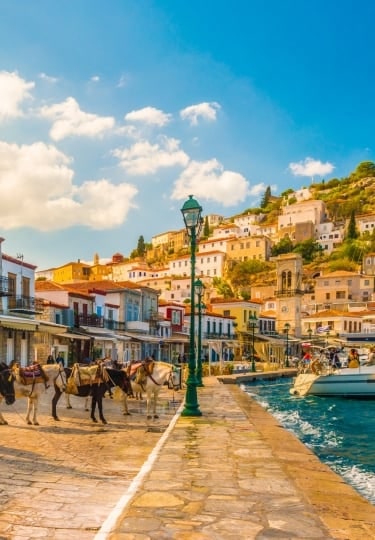Impossibly beautiful and incredibly cosmopolitan, Hydra is one of the four main islands of the Saronic Gulf, the northern stretch of the Aegean Sea that curves around the Athenian coast and the eastern shores of the Peloponnese.
Just a short ferry ride from the Greek capital, it’s a favored location of well-heeled Athenians who use the island as a weekend escape. Hydra has also drawn writers and artists ranging from musicians Leonard Cohen (who made it his mid-60s home) and Dave Gilmour of Pink Floyd (who owns a home here) to Australian author Charmian Clift, poet Henry Miller, and actress Sophia Loren.
All are attracted by a pretty port area where buildings spill down the surrounding steep hills to a harbor lined with traditional fishing boats, car-free streets, and a great bar and café scene.
Marry the picture postcard location with hazy, sunny days, hidden beaches that can only be approached by boat, deep history, a smattering of culture, and the warm hospitality of the locals, and it’s not hard to see why so many people fall for this gorgeous little island.
Why Visit Hydra, Greece
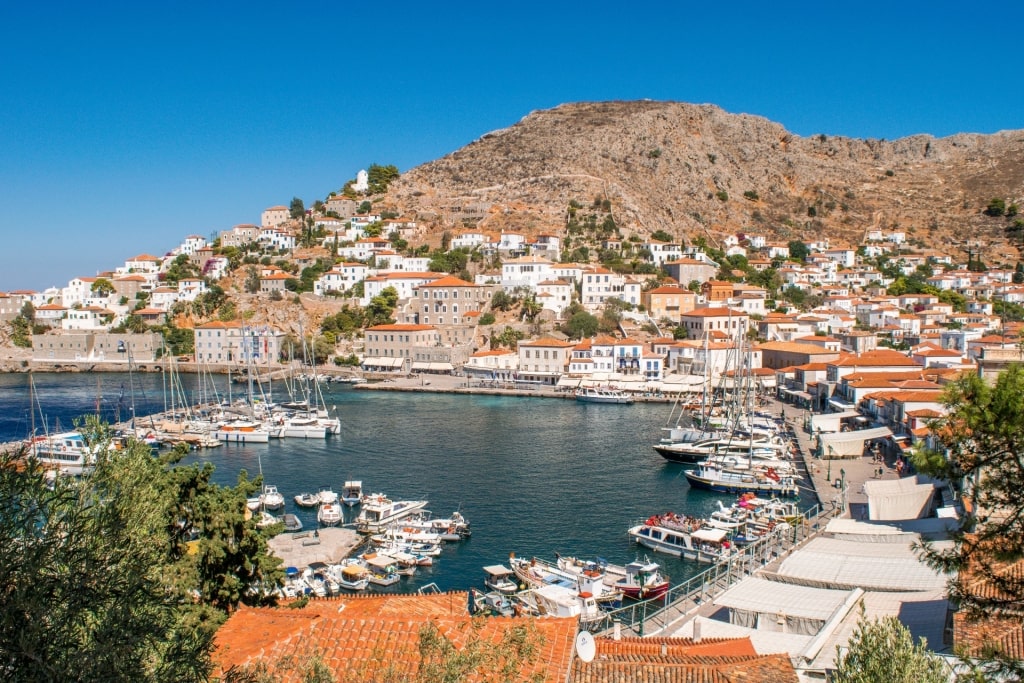
Hydra
Arriving in Hydra’s pretty port is one of the quintessential Greek island experiences. Elegant mansions—once the homes of the island’s community of famed 19th-century sea captains—line the blissfully car-free streets and marble-lined alleys that snake from the harbor up the surrounding hills.
One of the most unique places to visit in Greece, the harbor forms a natural arc of tavernas and traditional coffee shops, the air redolent with the aroma of freshly grilled fish. The sound of ice tinkling in tall glasses of aniseed-flavored ouzo mingles with the click of backgammon dice and the call of the fishermen.
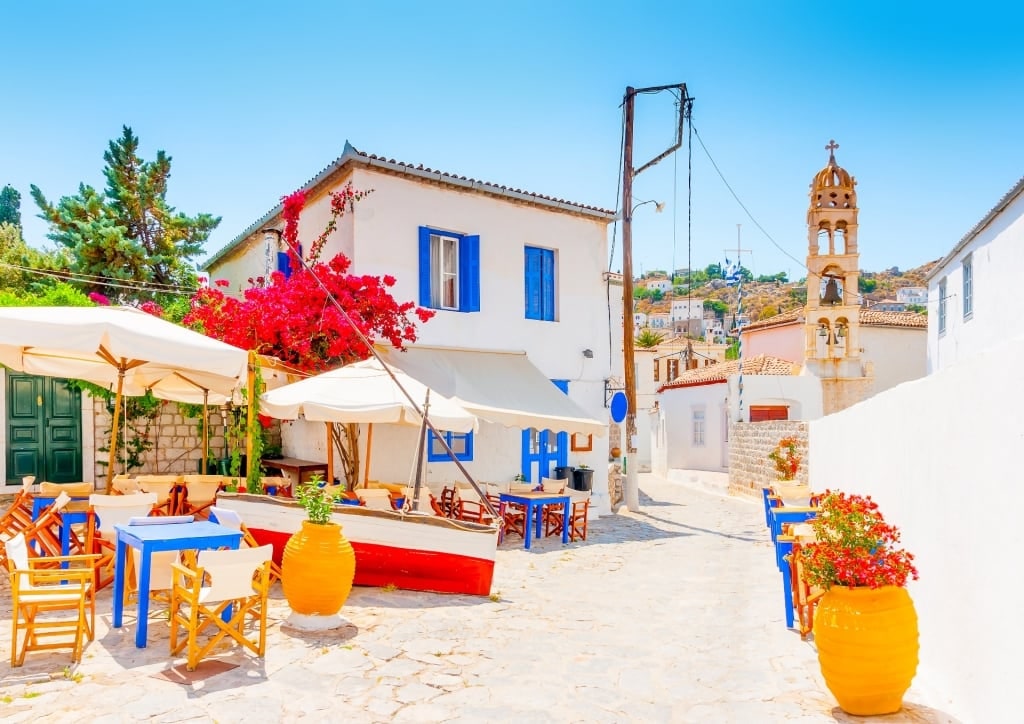
Hydra
It’s so perfect, it’s hard to walk the streets without imagining a director shouting “Cut!” and all the extras going back to their cues. Little wonder, then, that many a movie has been set here over the years.
The port is the epicenter of life for both the island population of 2,000 and the many summer visitors. There are just a few fishing hamlets around the rest of the island, but there is plenty to discover.
Shoppers will love the quirky boutiques around the backstreets, history is plentiful, and there are several fine-dining restaurants in this romantic Greek getaway.
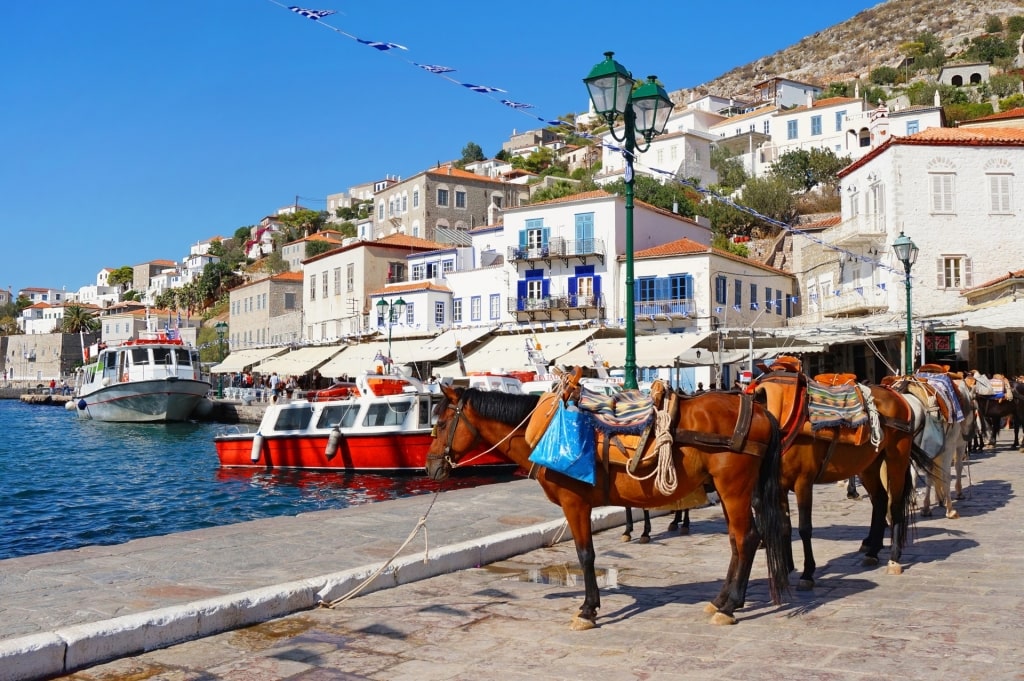
Hydra
Outside the small capital, life becomes much more rural. Transport is by horse, donkey, water taxi or on foot and there are trails to walk, hills to climb, monasteries to visit, and remote beaches where you can jump straight into the cooling waters.
History & Culture
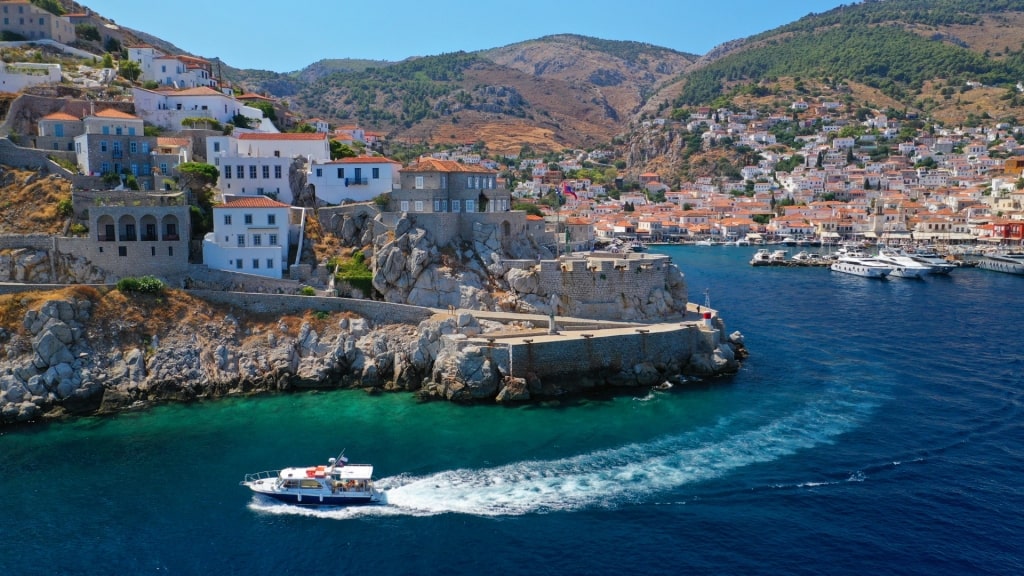
Hydra
In ancient times, Hydra was known as Hydrea (the Greek word for water or hydration) thanks to the natural springs that were said to be here, but for many years the island had little historical role.
Settlers came and went—much of the land is arid and inhospitable—but few stayed for too long thanks to the number of pirates around the Aegean who would regularly ransack islands that could not defend themselves.
That changed somewhat toward the end of the Byzantine Empire in the 15th century when the Arvanites, a bilingual Greco-Albanian race, made the island their home after fleeing less welcoming spots around Greece.
They began to build some of the island’s structures still seen today and as commerce grew, so did Hydra’s naval strength.
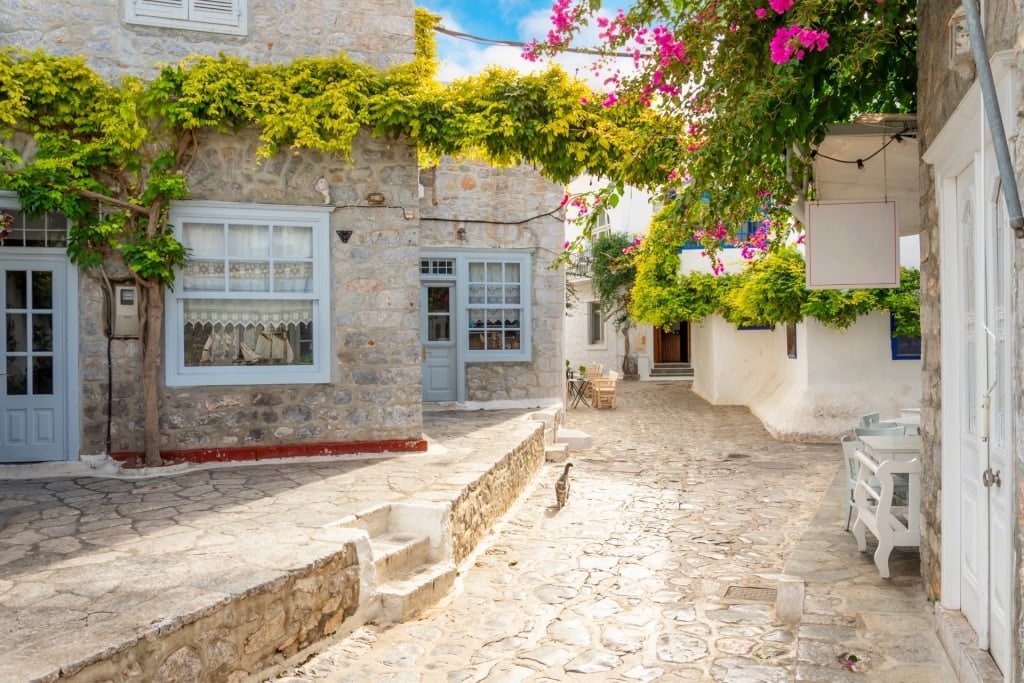
Hydra
Ottoman rule attempted to curtail that commercial growth and naval power, but Hydra continued to develop, albeit at a slower rate, though not slow enough to deny its navy a starring role in the Greek War of Independence.
From this, two local sailors and businessmen, Andreas Vokos Miaoulis and Lazaros Koundouriotis emerged as national heroes and leaders of the revolution against foreign rule.
The post-independence years were not kind to Hydra. Many of the commercial fleet owners refused to modernize and the island fell into decline with only a brief period of prosperity thanks to an emergent sponge fishing industry, but that was too little, too late.
By the time the Axis powers invaded Greece in World War II, the island’s population had severely declined again and the numbers of those who remained were further decimated by a long famine.
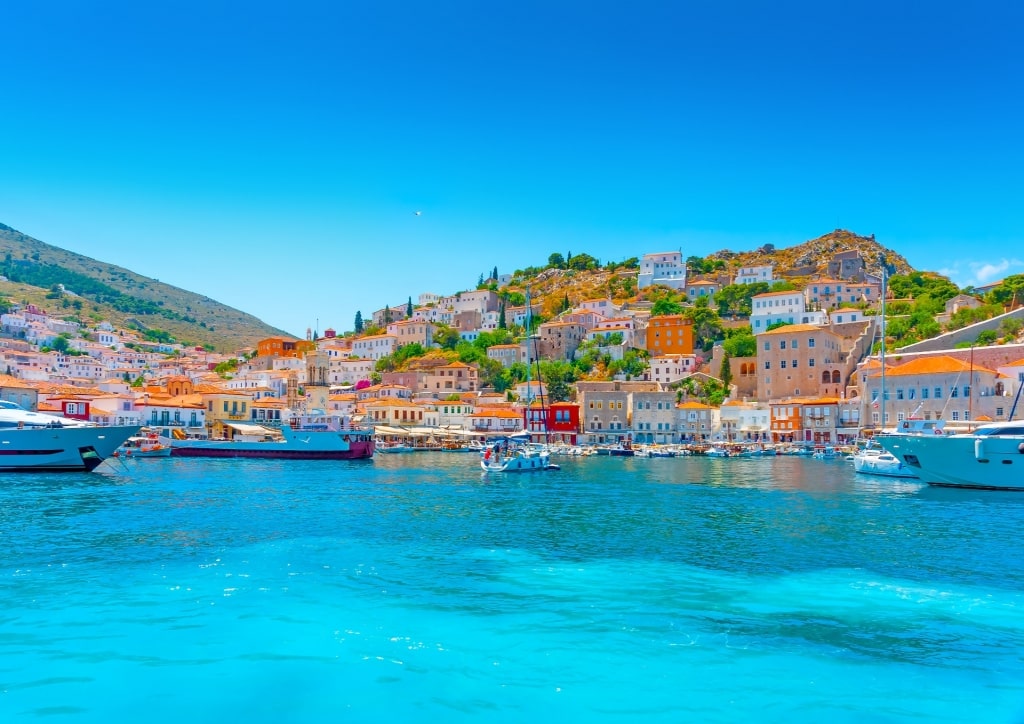
Hydra
It was not until the late 1950s and 1960s that the island rose again to what it is today. The elegant former sea captain’s homes were slowly snapped up and renovated, Bohemian types began to vacation here, and the island’s perfect potential as a holiday resort was fully realized.
Wildlife & Nature
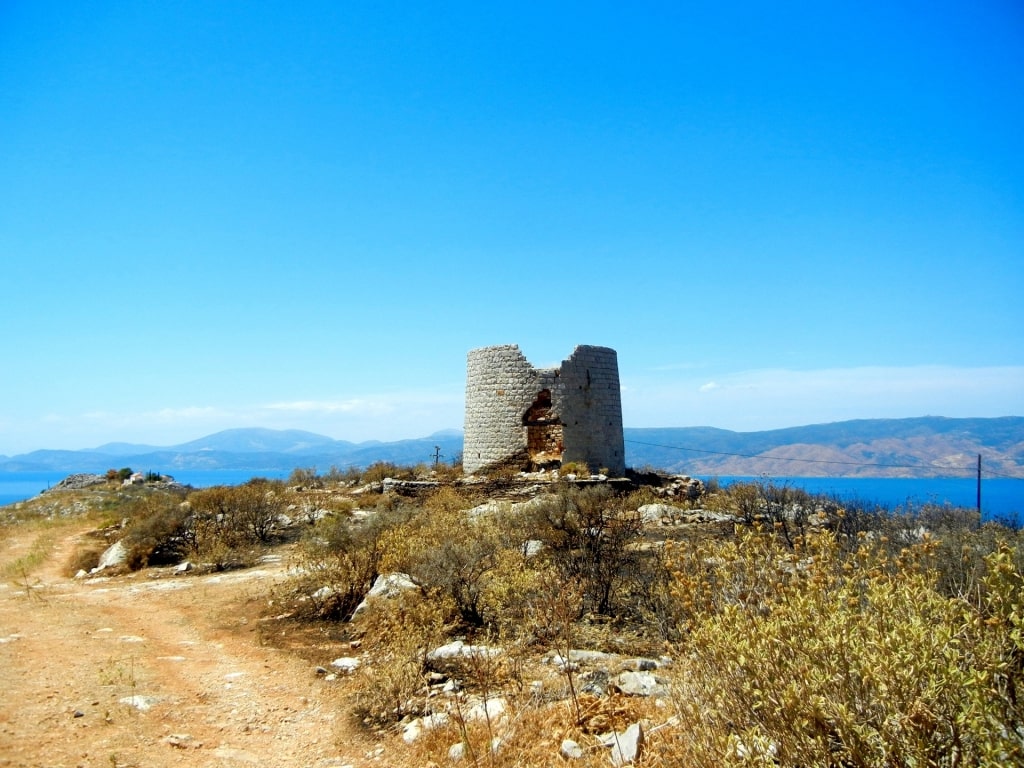
Mount Eros
Much of Hydra has that barren feel of the islands of the Aegean. Long and thin in shape, the island is, in fact, the spine of one of the best mountains in Greece, some 12 miles long and with a highest point of around 1,600 feet.
While much of it can feel dry and barren, there are some fine walking paths through cypress and pine forests, particularly in the lowlands, and these paths can be abundant with wildflowers and herbs, particularly in early spring before the weather becomes too hot.

Greek tortoise
Hikers or those exploring the island on horseback, a popular pastime, may spot wild goats, rabbits, and hare on their travels, with a particular treat being a glimpse of a Greek tortoise, which can live up to 70 years old. Look out for these beautiful slow-moving reptiles in areas where there is dense gorse which they use to protect their hides.
Tips for Visiting Hydra
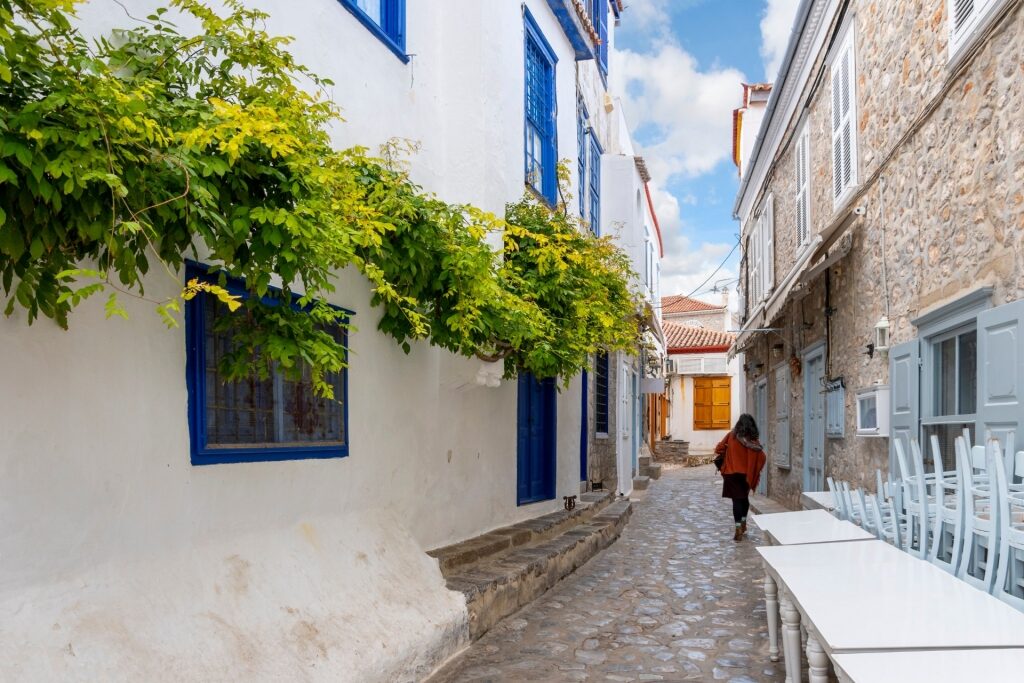
Hydra
Hydra is one of the most beautiful places in Greece, and the port area is where most, if not all of the action is. Given its small size, it can seem easy to navigate but visitors should beware of the winding streets that can often turn back on themselves leaving one disoriented on an island where it’s unwise to rely on the GPS of a cell phone.
Heading downhill generally results in hitting the harbourfront at some point, but if in doubt, friendly locals are more than happy to help. The island’s status as a tourist destination means almost everyone has a good knowledge of English.
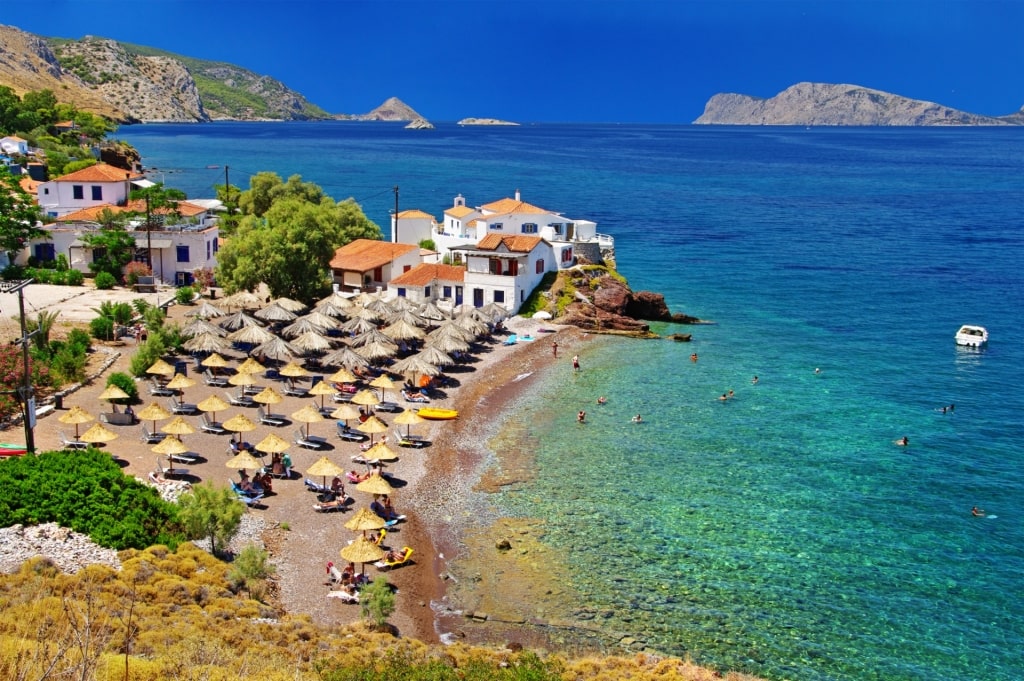
Hydra
For those wishing to leave the port area, there are three ways: explore on foot (it’s a good hike to leave the town itself), by donkey/horse, or by sea taxi. The latter operate throughout the warmer months to the island’s many hidden coves and beaches for those looking for a cooling swim.
Things to Do & Attractions in Hydra
Visit Lazaros Koundouriotis Historical Mansion
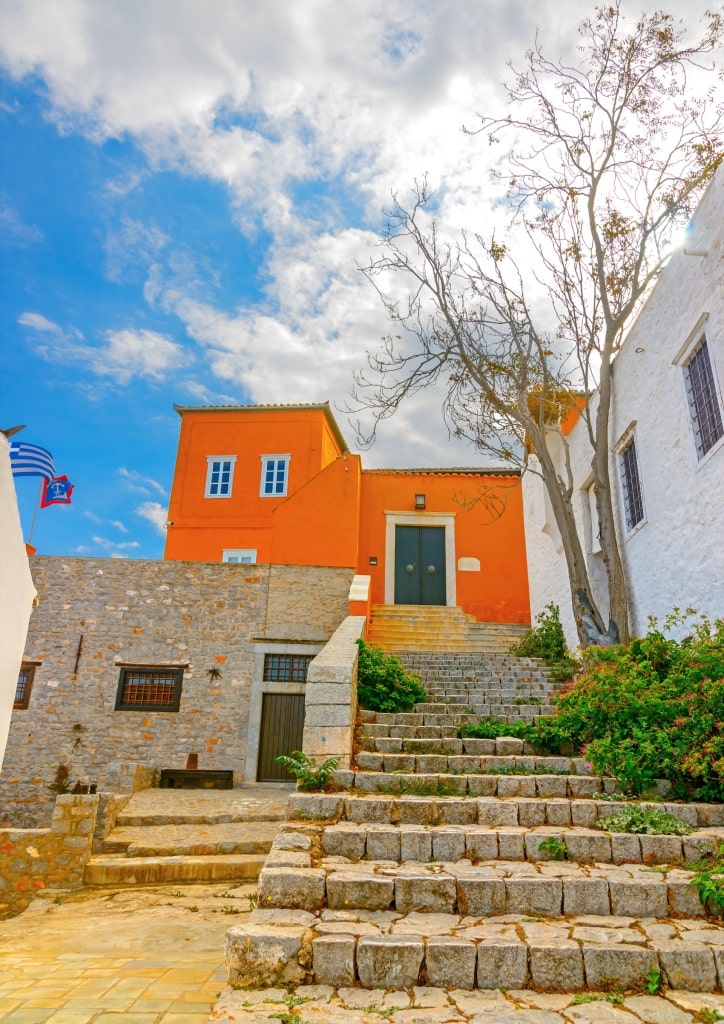
Lazaros Koundouriotis Historical Mansion
Discover what island life was like for the 18th century rich and famous at this imposing, turmeric-colored mansion that was the home of one the island’s national heroes.
After years of disrepair, many of the rooms have been refurbished with period finery, plus there are items of jewelry, fine art, and traditional outfits from the era.
It’s from these very rooms that Koundouriotis not only helped fuel the downfall of the Ottoman Empire but also helped form the first government of an emerging independent and unified Greece.
Delve Into the Historical Archives Museum of Hydra
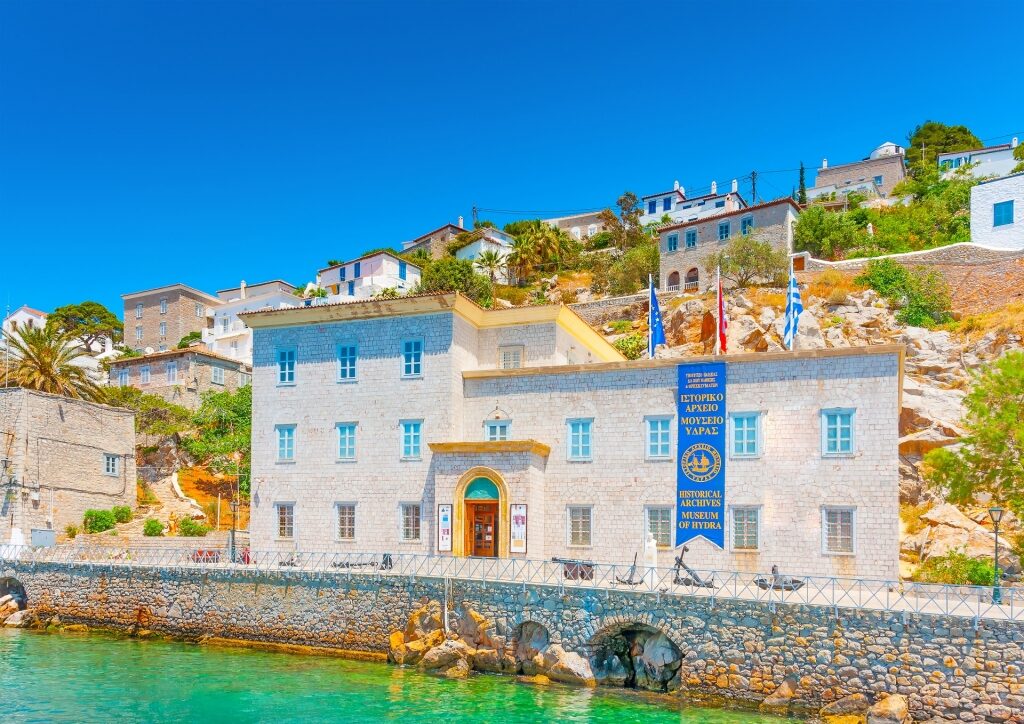
Historical Archives Museum of Hydra
Set on the eastern side of the port, this fine museum offers a detailed telling of Hydra’s naval history and contains models of ships, period costumes, weapons, and a silver urn that contains the embalmed heart of the island’s other War of Independence hero, Andreas Vokos Miaoulis.
A little further along the port front from the museum is a fine statue of the forward-thinking admiral that some may find a more palatable monument to his fine deeds.
Admire the Cathedral of the Assumption of the Virgin Mary
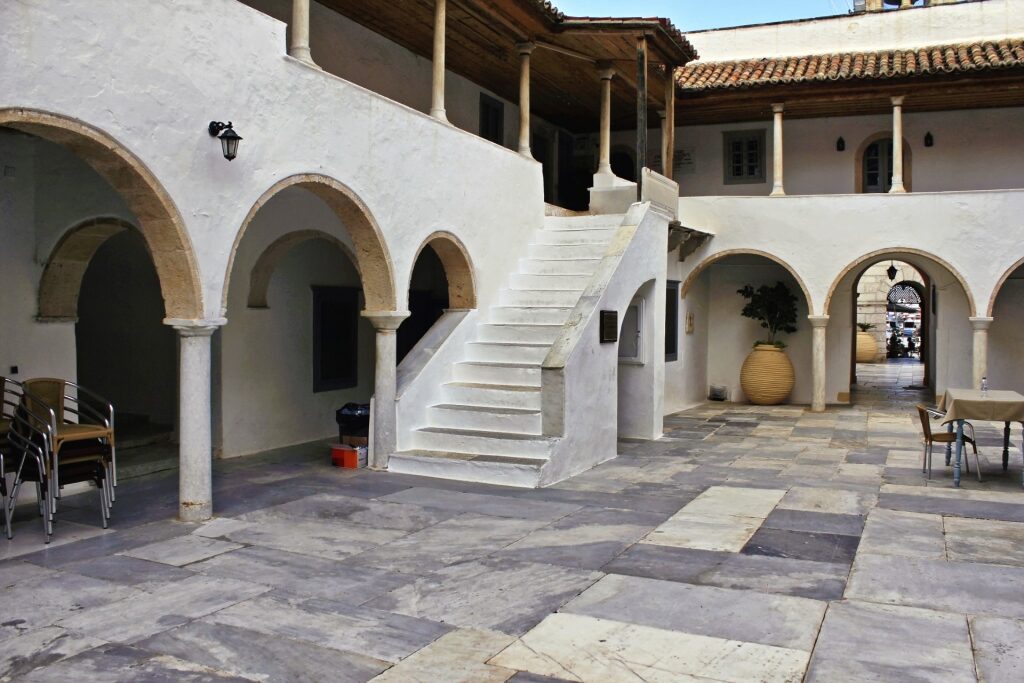
Cathedral of the Assumption of the Virgin Mary
The Metropolis of Hydra, the Cathedral of the Assumption of the Virgin Mary, is a three-domed cathedral in the heart of the port and dates from at least the 17th century. Inside, there are ornate religious icons, huge chandeliers lit by oil lamp or candle, frescoes, and sculpted crosses.
The cathedral also has two bell towers, the peals of which can be heard through the entire town ahead of a service.
Hike Mount Eros
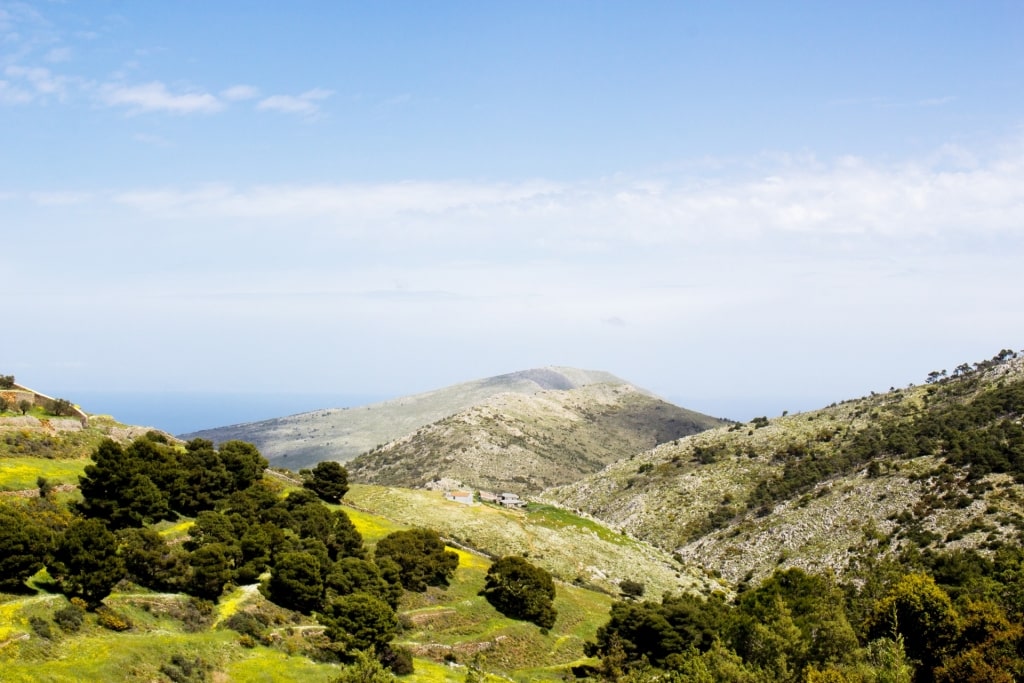
Mount Eros
The island’s highest point is not the easiest hike in Greece but is rewarded with fine views over the Saronic Gulf to the coast of the Peloponnese and neighboring islands.
The paved trail also passes the Monastery of the Prophet Elias, an all-male monastery that dates from the early 19th century and contains an extensive library.
The monastery is also famous as another War of Independence hero Theodoros Kolokotronis was kept prisoner here for four months as factions stood against each other for control of post-revolutionary Greece.
Browse the DESTE Foundation for Contemporary Art
Housed in a renovated former slaughterhouse, this offshoot of the Athenian artistic non-profit foundation organizes regular exhibitions by artists in residence over the summer months, including some with international renown.
Deste means “take a look” in Greece and the fabulous modern art at this unique gallery is certainly worth following that advice.
Take a Water Taxi to the Beach
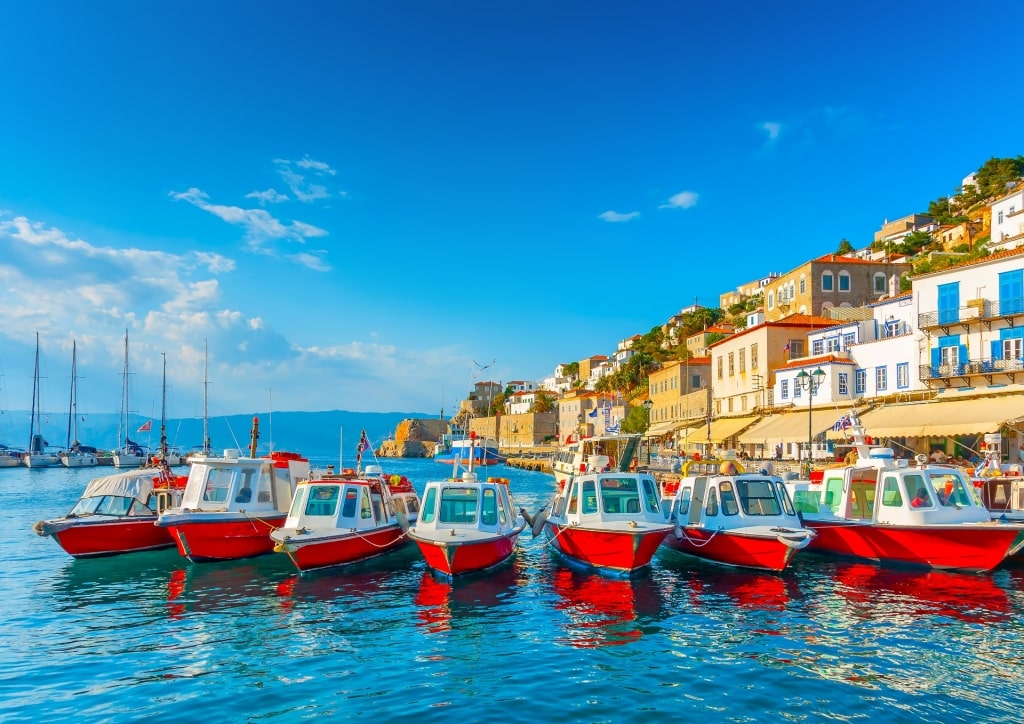
Water taxis in Hydra
A number of beaches are within walking distance of the town center but the best ones can be reached by water taxi. One of the most easily accessible is Vlychos—one of the best beaches in Greece—a small stretch of fine sand with umbrellas and sun loungers for public use, as well as a gently shelving seabed.
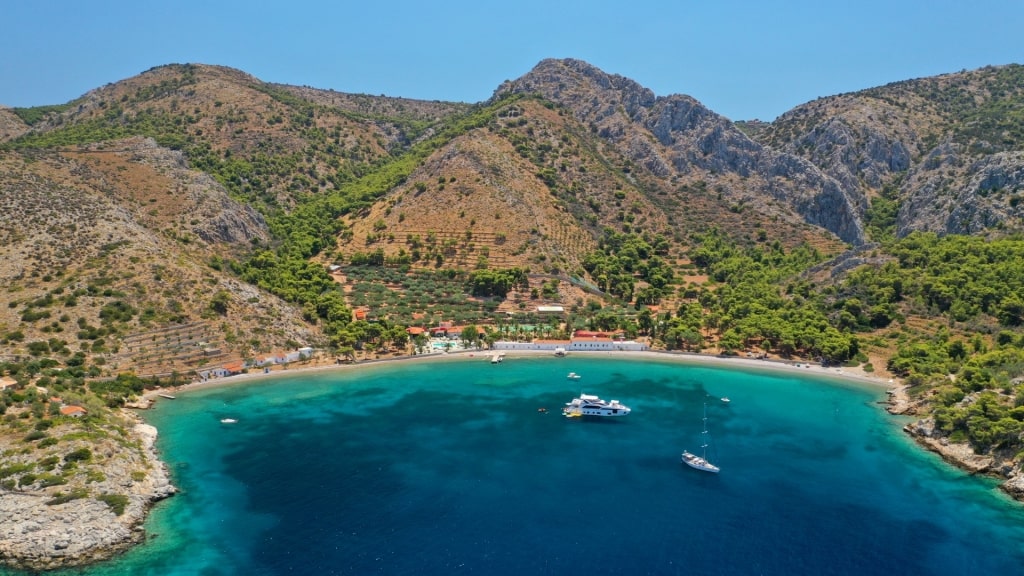
Molos Beach
Other popular choices include sandy Molos beach to the west of the port, and Limonizia, a pebbled bay to the southeast that seems to avoid the summer crowds.
Go Horseback Riding
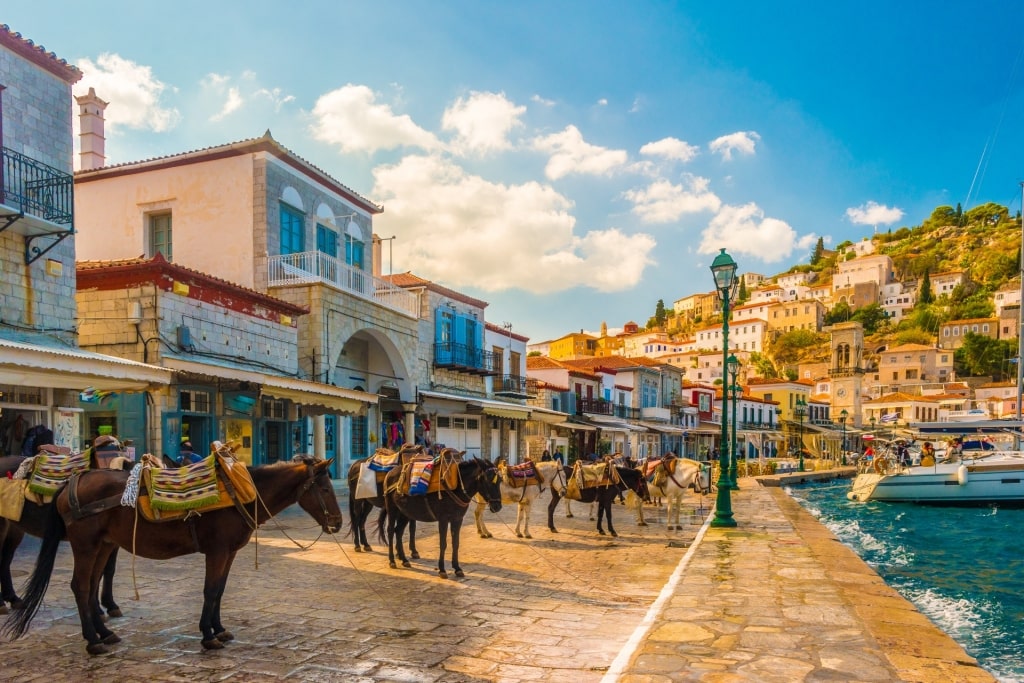
Hydra
With wheeled transport prohibited on Hydra, the best way to get around the island is by donkey or on horseback. Treks can be organized to a number of locations on the island, including some beaches and the Monastery of the Prophet Elias for fantastic views.
Follow the Leonard Cohen Trail
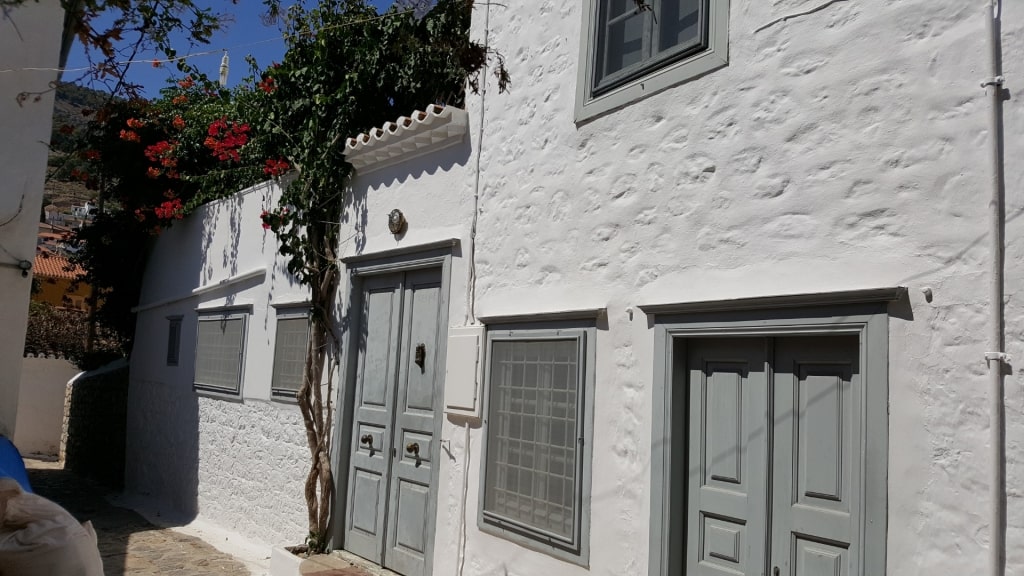
Leonard Cohen House Photo by Hilde Demarsin on Wikimedia Commons, licensed under CC BY-SA 4.0
The famed Canadian singer, novelist, and poet lived on Hydra with his muse Marianne Ihlen in the 1960s before going on to find fame and fortune on his return to North America.
The gravelly-voiced, soon-to-be star lived in a three-story whitewashed house with a unique hand-shaped door-knocker opposite the Four Corners grocery shop in town.
Other known Cohen hangouts include the Rolo Café, where he performed his first-ever concert (then known as O Katsikas coffee shop), The Pirate Bar where he used to hang out, and Roloi, an ouzeri under the town’s clock tower.
Food & Drink
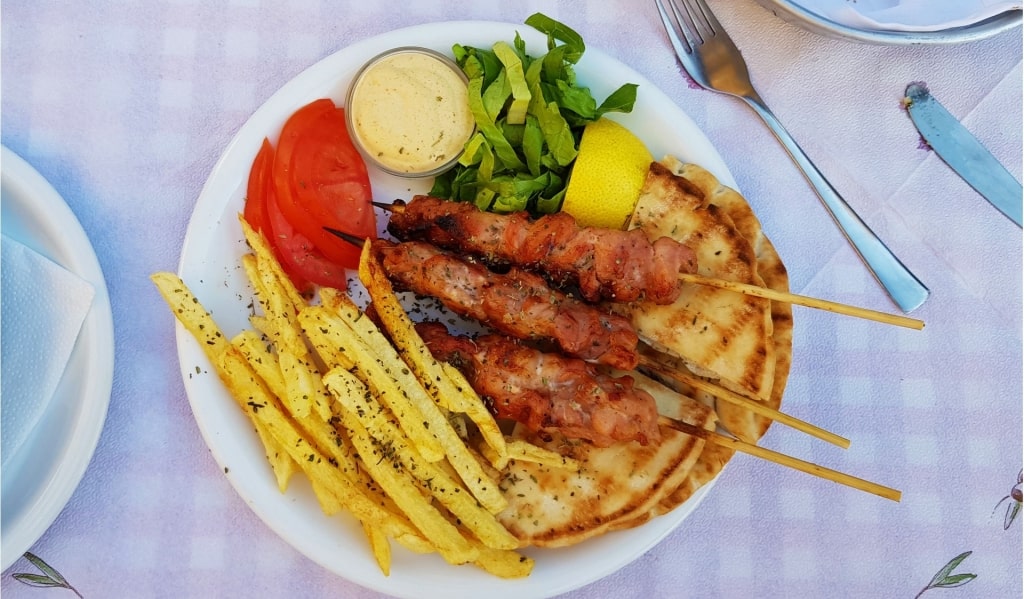
Greek food
Hydra’s cuisine is similar to the rest of Greece, relying on fresh catch from the island’s small fishing community, in-season salads, and meat dishes, either grilled or stewed.
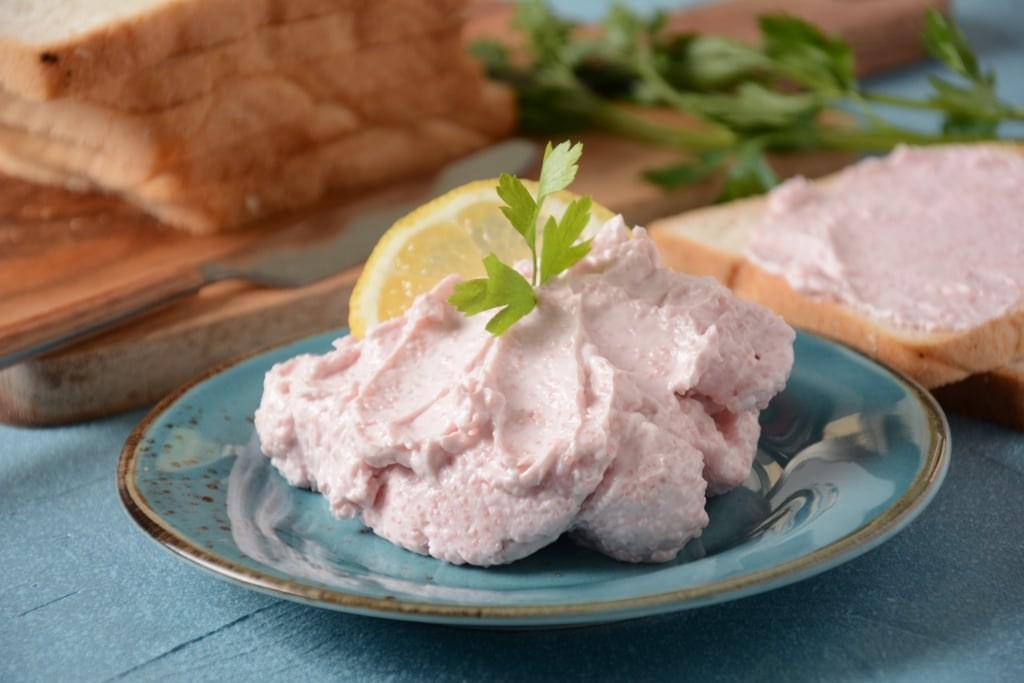
Taramasalata
There are a number of fish restaurants around the town. Note that fresh seafood is sold by weight, rather than portion, and it’s perfectly acceptable to ask to visit the kitchen and choose your fish. For a further taste of the sea, try delicious freshly caught and grilled octopus or taramasalata, a dip made of fish roe.

Moussaka
Traditional Greek classics are abundant: moussaka (layered ground beef and eggplant topped with creamy bechamel sauce) and pastitsio (a similar dish with pasta replacing the eggplant) can be found in many restaurants.
Souvlaki, the uniquely Greek kebab street food, served with fries and a squeeze of fresh lemon, is abundant around the harbor.

Galaktoboureko
Sweets are usually influenced by flavors of the east and originate from Constantinople (as the locals still call Istanbul). Look out for baklava, a baked flaky pastry stuffed with nuts and honey, galaktoboureko (a custard pie) and Greek rice pudding, known as rizogalo.
For those seeking high-end cuisine, Téchnē Restaurant & Social just out of the town is a great choice. Here, one of Greece’s finest young chefs, Yannis Michalopoulos serves up modern takes on Greek classics in a rustic restaurant with views over the ocean.
There are also several Greco-Italian restaurants that offer fusion dishes such as risotto flavored with cuttlefish ink.
Best Time to Visit Hydra
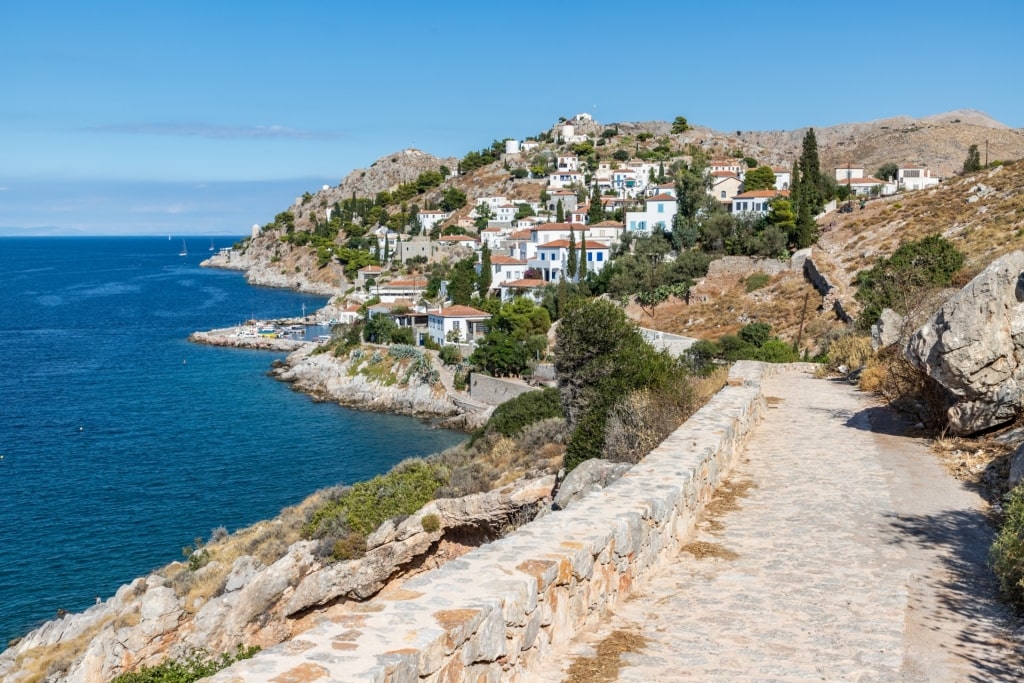
Hydra
Unlike many of the Greek Islands, Hydra’s proximity to Athens means it doesn’t shut up shop outside of the main tourist season, but things really come back to life from spring onwards.
For those looking for the typical heat of the Greek Islands, the height of summer is the best time to visit, but it can be busy, especially on weekends when Athenians flock here, and around August 15—a significant religious national holiday for Greeks.
The shoulder seasons of spring and early fall can be incredible. The island is fully open, temperatures are slightly milder and crowds are less dense. Nature lovers will particularly enjoy spring when the island’s flora bursts into life and exploring the island’s walking paths is a joy.
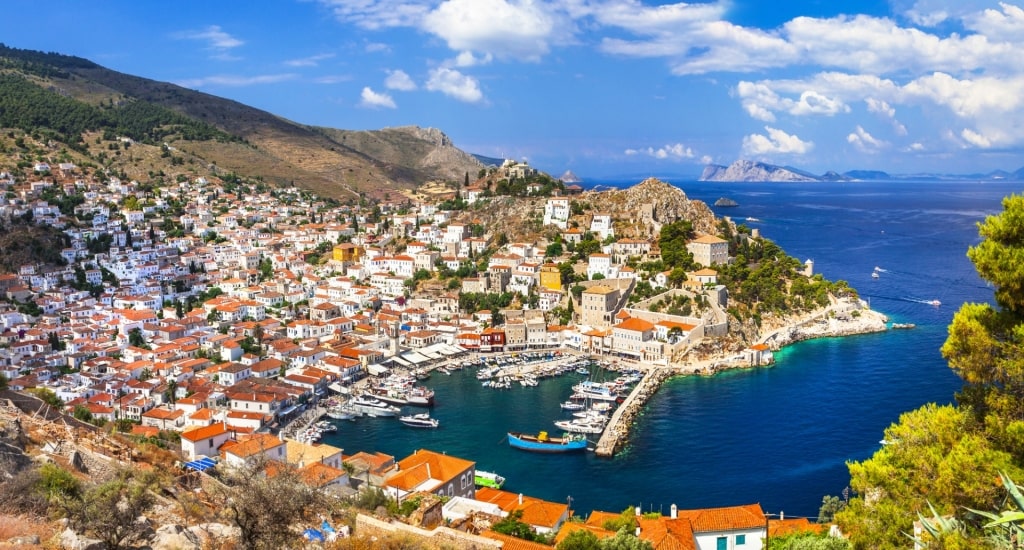
Hydra
Are you ready to unleash your inner artistic spirit and head for creative Hydra, Greece? Browse our cruises to Hydra and plan your Aegean adventure.
